Cleopatra's needle - Eremurus flower
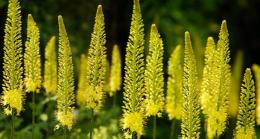
Eremurus, Shiryash, Cleopatra's needle is a perennial herbaceous plant of the genus Eremurus, family Xanthorrhoeaceae. The Eremurus flower grows in Asia, southern Europe, and the Caucasus. Eremuruses are common in the wild: Representative, Tien Shan, Altai, Himalayan.
Content:
Flower structure
External data perennial flowering Eremurus make it the most noticeable plant among garden flowers. Majestic growth and unusual flowering attract the attention of gardeners.
A straight, tall, single stem emerges from a rhizome surrounded by fleshy roots. The height of the stem in the wild reaches a meter, in cultivated plants from one and a half to three meters. The rhizome in the lower part dies off every year and is replaced by a new one with young roots. The leaves are collected in a dense rosette. The stem is crowned with a long flower raceme.
Most often, the flowers are colored white, pink, yellow, and red. Garden varieties and hybrids have bright orange, red, and cream flowers. The perianths are bell-shaped or cup-shaped. The flowering brush reaches from 35 to 70 cm in length. Eremurus begins to bloom in May and continues until mid-summer. The lower flowers open first, and the entire cluster gradually blooms.
It happens that boxes with seeds have already formed at the bottom, and the top is in full bloom. Seeds spill out of the opened pods and fall next to the mother plant.The germination rate of even green seeds is very good. After flowering, the above-ground part of the plant dies off. In the spring, from the rhizome, the Eremurus flower expels a powerful shoot reminiscent of asparagus.
Some types for better cross-pollination, they have an interesting adaptation for attracting pollinating insects: after the pollen ripens, the perianth withers, turning into a brown lump with a bright green tubercle, which from a distance looks like a flower aphid. The fly Serfus pirastrii, feeding on green aphids, rushes to these tubercles, gets its paws into the sticky pollen and transfers it to other eremurus.
Beauty, durability, and comparative unpretentiousness have made the Eremurus flower attractive to flower growers and florists.
Types of Eremurus in the garden

On personal plots The following types of Eremurus are cultivated:
- Eremurus powerful
- Eremurus angustifolia
- Olga's Eremurus
- Eremurus yellow
- Eremurus Ilaria
- Eremurus altai
- Eremurus Aitchison
- Eremurus snow-white
- Elvis Eremurus
Olga's Eremurus is a gorgeous species, named after the Russian female botanist - Olga Alexandrovna Fedchenko (1845 -1921). She devoted her life to the study of plants. On numerous expeditions to the Pamirs, Tien Shan, Turkestan, and Afghanistan, she collected herbarium material in hard-to-reach and little-studied places. She has compiled descriptions of many plants and is the author of a monograph on Eremurus.
In addition, she created an acclimatization garden, where she conducted work on the study of ornamental plants for 25 years. Thanks to her, Eremurus first appeared in the botanical gardens of Moscow and St. Petersburg, and from there they conquered the gardens of Russia and Europe.
Olga's Eremerus reaches a height of one and a half meters, and the brush length is up to 75 cm; delicate pink-white flowers are more than three centimeters in diameter and have a unique aroma.
Eremurus is a powerful, powerful, tall plant, with a lush basal rosette of bluish-green narrow leaves. Powerful stems reach three meters in height, and the inflorescence exceeds one meter in length. The white or pale pink flowers reach at least four centimeters in diameter, and the orange centers are visible from afar. Flowering begins in mid-June and lasts 40 days. The fabulous grandeur of the flower does not leave anyone indifferent.
Eremurus angustifolia in gardens exceeds one and a half meters in length, the inflorescence is in the form of a cylindrical brush up to 85 cm in length, each consisting of several hundred flowers. The flowers are yellow, with bright orange long anthers, up to 2 cm in diameter, collected very tightly. It blooms in June and continues to bloom until August. Florists love this species for its long shelf life when cut, indispensable in bouquets, and suitable for dry arrangements.
Eremurus lactiflora, one of the most frost-resistant species. In the wild it grows in the subalpine mountain belt. The height of the plant is up to one and a half meters, the length of the leaves is up to half a meter. On a red peduncle there is a cluster of large milky white flowers. It blooms already in May.
Eremurus Himalayan, the most unpretentious and frost-resistant. The height of the peduncle is 170 cm, it is decorated with a brush of white fragrant flowers.
Two hybrids are also popular with gardeners:
- Shelford pastel, pink, yellow flowers
- Ruater with bright orange and red flowers
The variety of cultivated varieties allows you to choose a plant for any garden and almost any climate.
How to grow your own in the garden
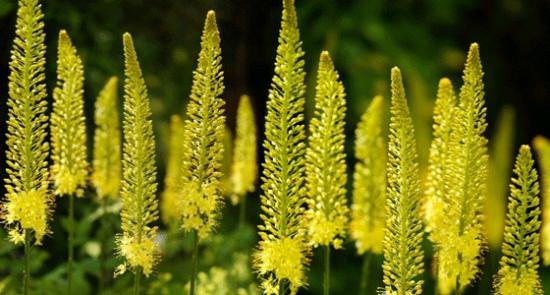
The place for planting this plant should be well-lit, with dry, loose soil of neutral acidity. The close occurrence of groundwater is detrimental to it.
Planting by seeds
Seeds are planted in the greenhouse in the fall, just before winter. Planting depth -2 cm. Shoots will appear in the spring. In the second year of life, plant in a greenhouse or greenhouse at a distance of up to 25 cm. In the 4th year, you can plant in the garden in a permanent place at a distance of 0.8 m to 1.2 meters from each other. They bloom in 5-6 years. You can divide the bushes by rhizomes at 6-8 years.
Vegetative propagation
Upon landing vegetative way it is necessary to dig up the rhizome of an adult plant and, without removing it from the ground, make 4 cuts on it. Sprinkle the cuts with crushed coal and cover the rhizome again with soil. Next spring, numerous young rosettes will appear around the mother plant. At the end of August, beginning of September, plant them in a permanent place. Such plants begin to bloom in the second or third year of life.
Young and adult plants in Russian gardens should be additionally covered for the winter. In very rainy summers, after flowering, the rhizomes must be dug up and stored in a cool, dry place until autumn planting.
You can purchase the plant both in specialized stores, including on the Internet, and in private collections.
All types of Eremurus have a good aroma, which makes these plants attractive to beekeepers. And for a flowerbed with an Eremurus flower to look decorative all season long, irises, daylilies, and carnations will be good neighbors.
Interesting video about the beautiful Eremurus flower:
Interesting information about the vegetable garden

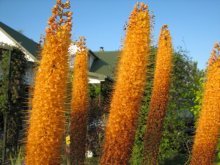
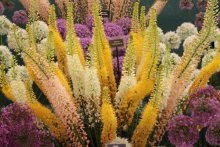
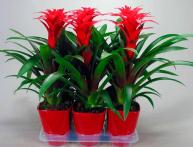
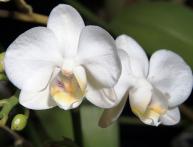
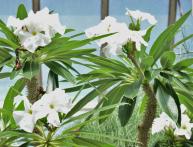
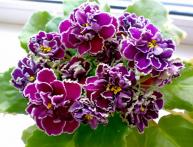
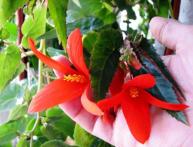
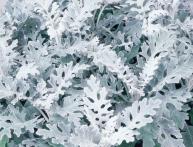
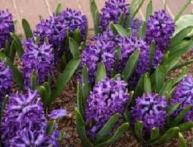
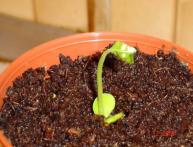
Comments
An amazing flower - I saw it for the first time this fall, it was given to someone at work.If you take a closer look, there seems to be nothing unusual, but the first glance at it is breathtaking, especially the continuous opening of small inflorescences, which gives the impression that it is growing even when cut. How nice that it can be grown in our region. :)